Ali Hussein Muqaibel
SDR-Based Metal Classification using Spectrogram Images from Micro-Doppler Signatures
Oct 25, 2024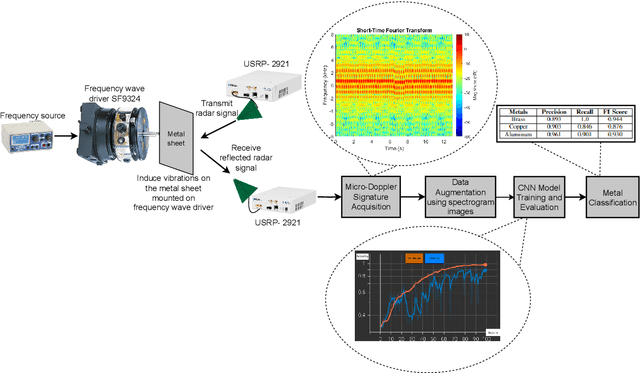
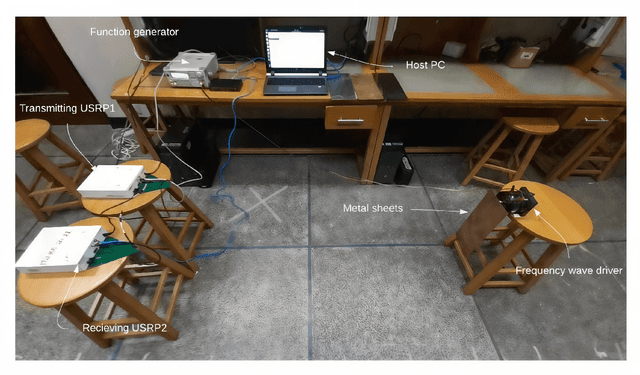

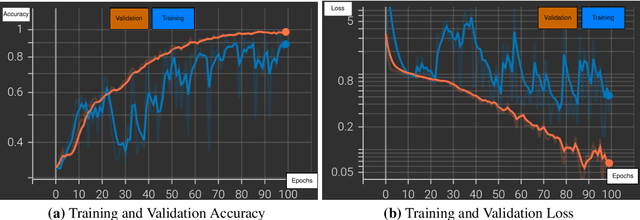
Abstract:Metallic materials such as brass, copper, and aluminum are used in numerous applications, including industrial manufacturing. The vibration characteristics of these objects are unique and can be used to identify these objects from a distance. This research presents a methodology for detecting and classifying these metallic objects using the vibration dynamics induced by their micro-Doppler signatures. The proposed approach utilizes image processing techniques to extract pivotal features from spectrograms. These spectrograms originate from micro-Doppler signatures of data collected during controlled laboratory experiments where signals were transmitted towards vibrating metal sheets, and the ensuing reflections were recorded using a software-defined radio (SDR). The spectrogram data was augmented using geometric transformation to train a convolutional neural network (CNN) based machine learning model for object classification. The results indicate that the proposed CNN model achieved an accuracy of more than 95% in classifying metals into brass, copper, and aluminum. This research could be used to understand the foundations of classifying spectrogram images using micro-Doppler signatures for its applications towards enhancing the sensing capabilities in industrial and defense applications.
UWB Radar for through Foliage Imaging using Cyclic Prefix-based OFDM
Aug 16, 2021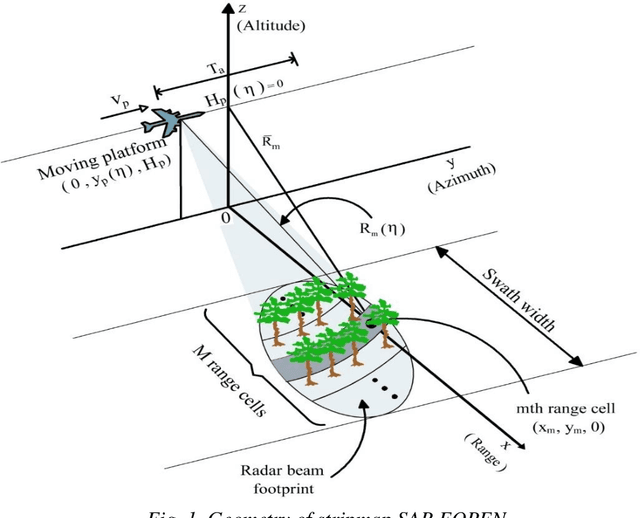

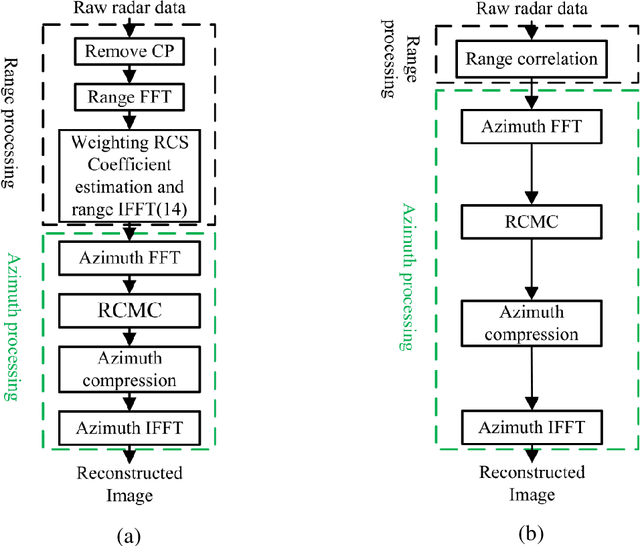
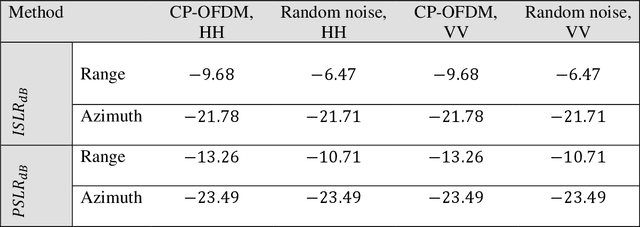
Abstract:This paper proposes the use of sufficient cyclic prefix (CP) OFDM synthetic aperture radar (SAR) for foliage penetration (FOPEN). The foliage introduces phase and amplitude fluctuation which cause the sidelobes to increase and affects the final image of the obscured targets. The wideband CP-based OFDM SAR inherently eliminates the sidelobes that arise from the interference between targets on the same range line. The integrated sidelobe level ratio (ISLR) of the CP-based OFDM signal along the range direction is lower than that of the random noise signal by 2 dB for foliage penetration application, while the peak sidelobe level ratio (PSLR) are almost the same of both of the two signals.
Energy-Efficient mm-Wave Backhauling via Frame Aggregation in Wide Area Networks
May 20, 2021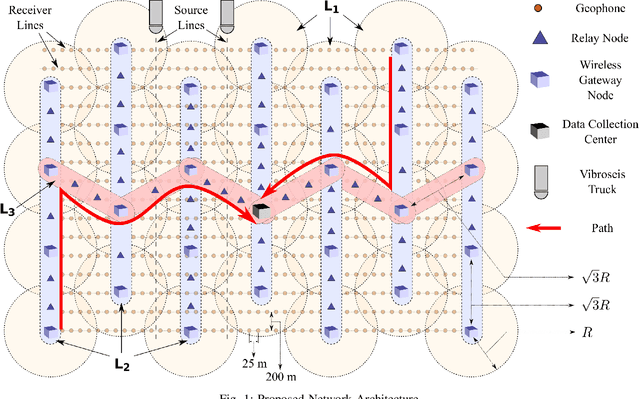
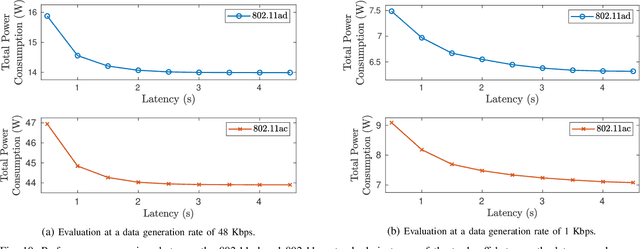
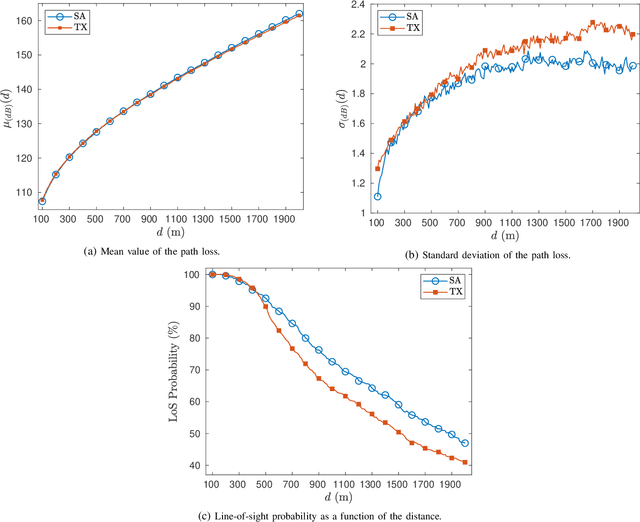
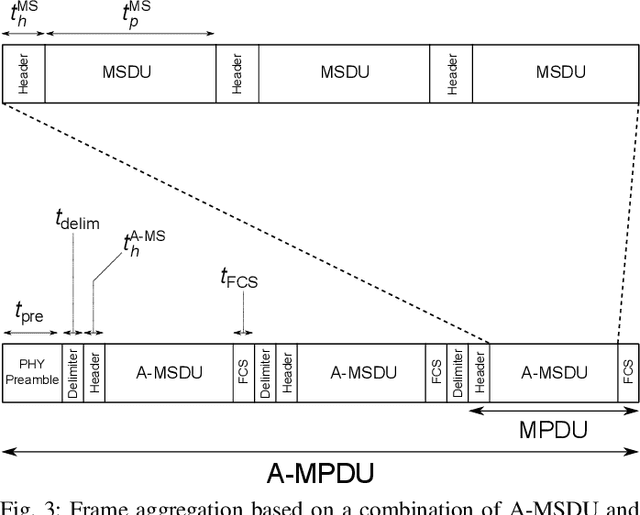
Abstract:Wide area networks for surveying applications, such as seismic acquisition, have been witnessing a significant increase in node density and area, where large amounts of data have to be transferred in real-time. While cables can meet these requirements, they account for a majority of the equipment weight, maintenance, and labor costs. A novel wireless network architecture, compliant with the IEEE 802.11ad standard, is proposed for establishing scalable, energy-efficient, and gigabit-rate backhaul across very large areas. Statistical path-loss and line-of-sight models are derived using real-world topographic data in well-known seismic regions. Additionally, a cross-layer analytical model is derived for 802.11 systems that can characterize the overall latency and power consumption under the impact of co-channel interference. On the basis of these models, a Frame Aggregation Power-Saving Backhaul (FA-PSB) scheme is proposed for near-optimal power conservation under a latency constraint, through a duty-cycled approach. A performance evaluation with respect to the survey size and data generation rate reveals that the proposed architecture and the FA-PSB scheme can support real-time acquisition in large-scale high-density scenarios while operating with minimal power consumption, thereby enhancing the lifetime of wireless seismic surveys. The FA-PSB scheme can be applied to cellular backhaul and sensor networks as well.
 Add to Chrome
Add to Chrome Add to Firefox
Add to Firefox Add to Edge
Add to Edge